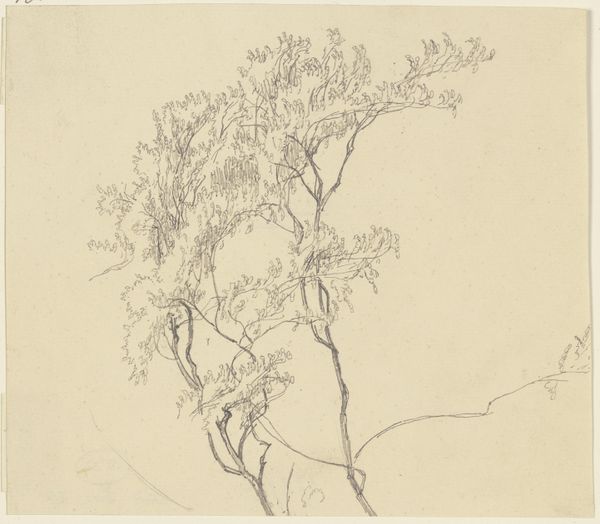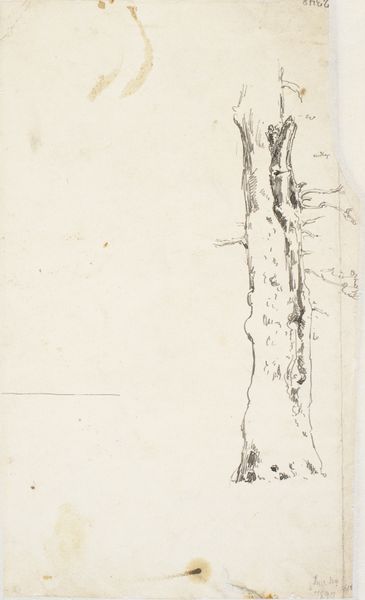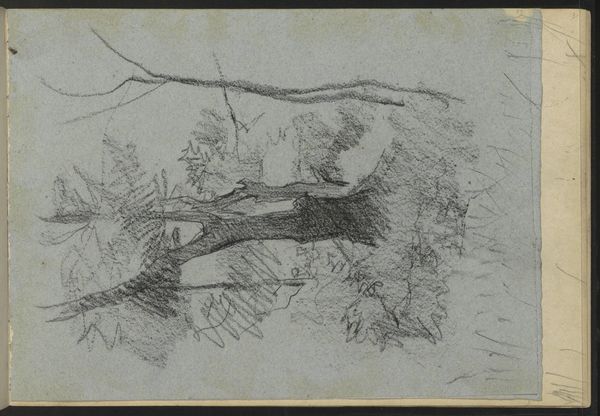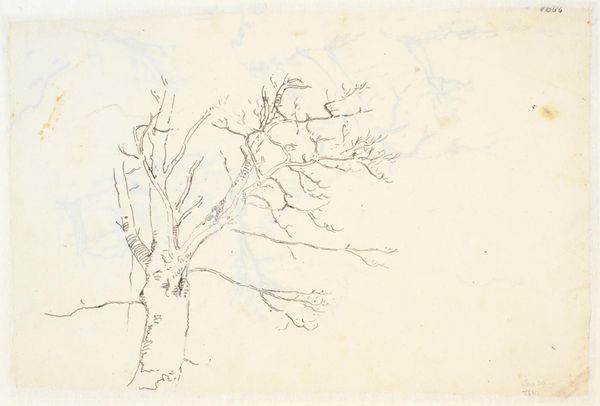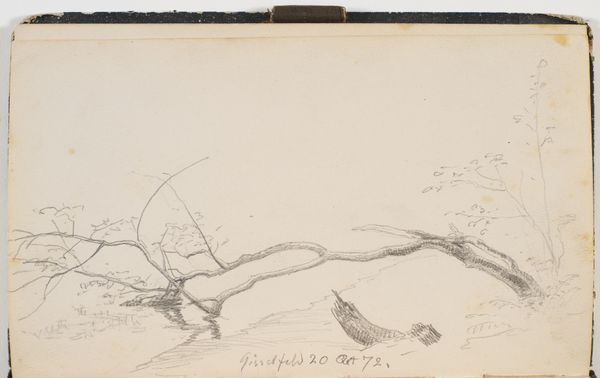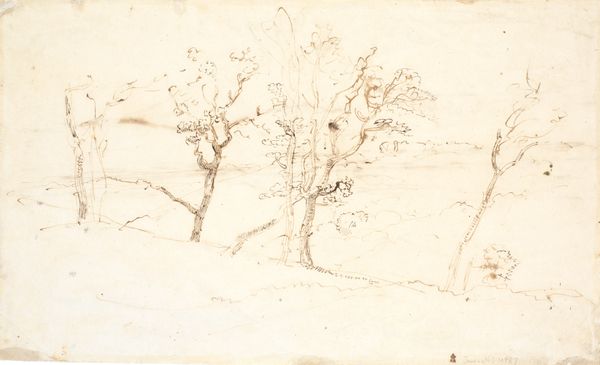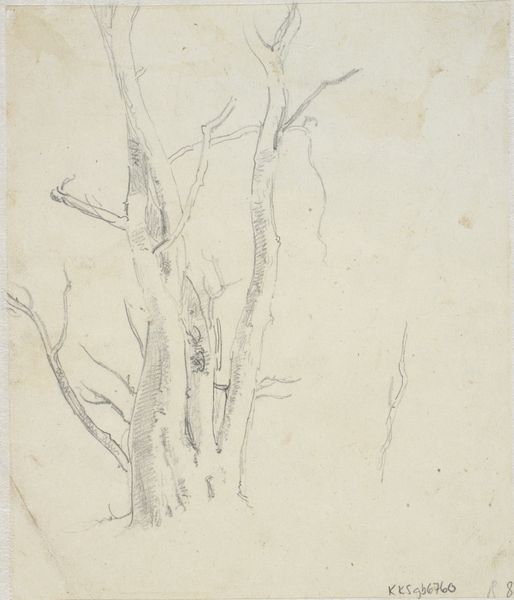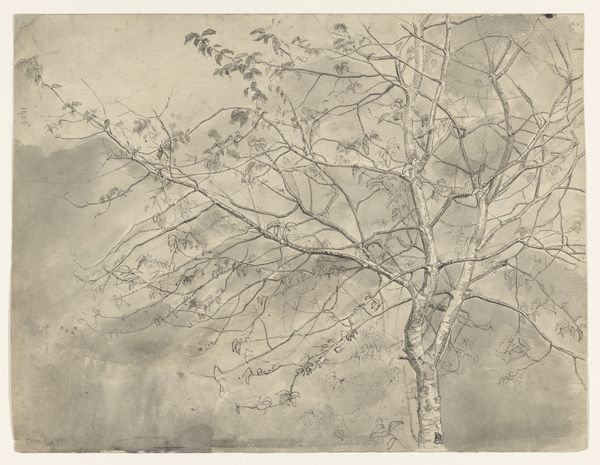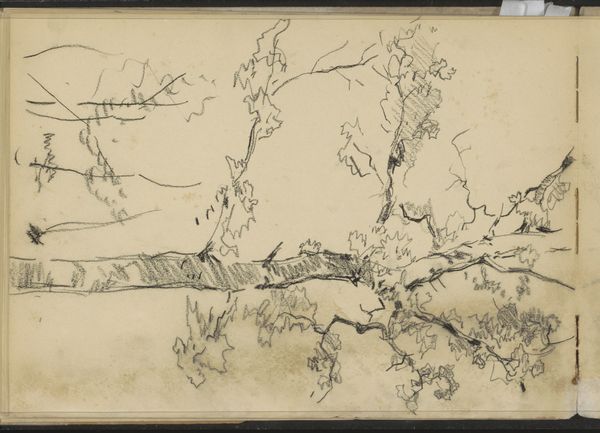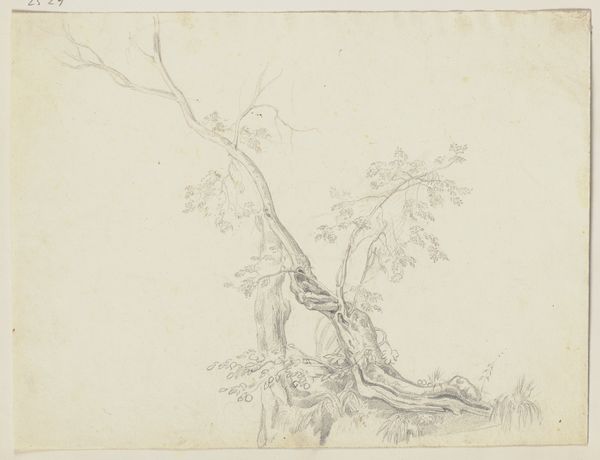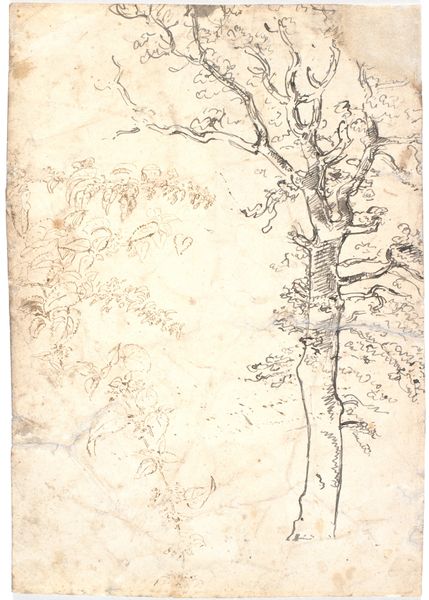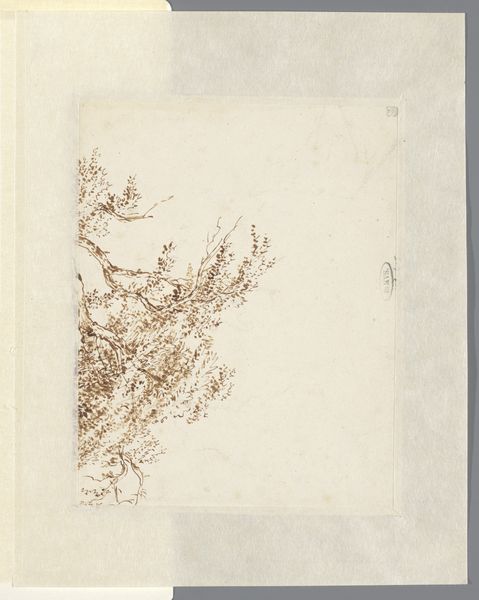
drawing, pencil
#
drawing
#
landscape
#
pencil
#
line
#
realism
Dimensions: 204 mm (height) x 331 mm (width) (bladmaal)
Curator: Let’s turn our attention to this intriguing sketch. It's called "Studier af grene. Et løst landskabsudkast," or "Studies of Branches. A Loose Landscape Draft," created by Dankvart Dreyer sometime in the 1840s. It's a pencil drawing. Editor: It's…sparse. Very delicate, almost ethereal. There's something about the way the tree is positioned, alone on what seems like a slope, that gives it a quiet, melancholic feel. Curator: The realism is quite striking, especially for the period. You can see Dreyer meticulously observed the intricate details of the branches and leaves. Yet it's also clearly a sketch, a study, not a finished piece, as suggested by the drawing's alternative title. Editor: And I think that's what makes it so powerful. It's like a fleeting moment captured, before it can be monumentalized or romanticized. It feels very honest. Considering Dreyer was working in the mid-19th century, what might he have been aiming to capture through realism, a period where idealized landscapes were far more valued? Curator: That is exactly the tension within this piece. Danish art in the 1840s was dominated by Romantic nationalism, but here, Dreyer is pulling away from idealization. I suspect, it's about capturing a truer reflection of the Danish landscape—showing its quiet, perhaps unspectacular, beauty. This was part of a larger trend to forge a unique Danish artistic identity, away from the dominant German influence of the time. Editor: So, this is more than just a study of branches, but of the construction of identity through art. This resonates today, especially when marginalized voices are finally breaking away from established narratives. Curator: Precisely. What appears initially as a simple study becomes an articulation of place, identity, and the socio-political currents shaping art production. Editor: Thinking about that, I appreciate the intentionality, revealing layers that one wouldn't see at first glance. It prompts a deeper connection to the landscape—both depicted and imagined. Curator: Agreed. And in that spirit, this unassuming drawing acts as a reminder that art can serve not only as aesthetic reflection but also a critical tool for understanding cultural values.
Comments
No comments
Be the first to comment and join the conversation on the ultimate creative platform.

